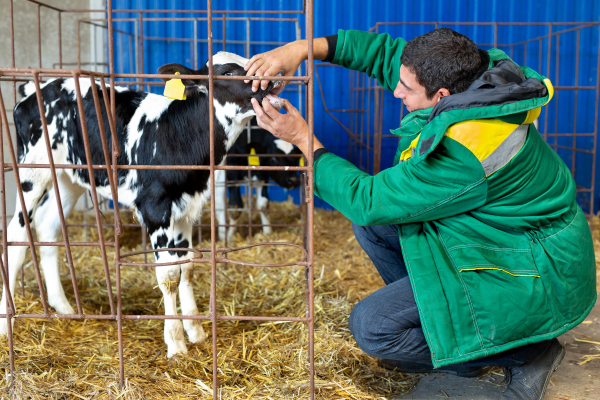Agribusiness News April 2024 – Inputs: Vet Spend
1 April 2024Suckler Herds – Vet Spend and Risk Management
Vet spend can vary significantly between different suckler herd units. In the 2022 QMS Cattle and Sheep Enterprise Profitability in Scotland report, the reported range was £2.50 – £7.80 per calf reared, with an average spend of £5.48 per calf. In general, there is a notable trend that the more profitable herds tend to have a lower vet spend in total but have a higher output of weaned calves on a per cow basis.
Treatment: Low Value Vet Spend
We have a duty of care to safeguard the welfare of livestock, so when animals are ill, veterinary ‘spend’ on advice and treatments are an obligatory and unavoidable cost to the business.
Although, the most significant cost of a disease outbreak is rarely (or never) in the vet spend itself, but in the lost productivity due to reduced fertility, growth rate or mortality that comes with the problem.
Taking pneumonia as an example, it is well understood that only around 40% of the cost to the business comes from veterinary spend. The bigger losses come from a combination of reduced growth rates (40%), higher mortality (14%) and increased labour requirement on farm (5%).
Prevention: High Value Vet Spend
Where efficient businesses win out is that a higher proportion of their vet spent (i.e. 80-90%) is in relation to prevention rather than cure.
In a low margin enterprise, the temptation is to look at all vet spend as a pure cost and try to eliminate it. However, investing time and money in seeking preventative advice, will pay more dividends in the long run due to healthier, more productive stock. .
Assessing Health Risk Value
By getting it wrong, what do you stand to lose? One quick and easy way to do this is to estimate the total herd value at weaning for both best case and worst case scenarios. The difference between these two figures is the financial value of the health risk that the business faces. The bigger the figure, the greater the importance of investing in preventative advice..
Herd Values
Two key figures to focus on are the estimated value of your calves at weaning time and the cost of replacing a dead cow or one you need to cull early due to health or fertility issues.
Fertility
With the Scottish Government introducing a maximum 410 day calving interval for Suckler cows under the Suckler Beef Support Scheme in 2025, herd fertility issues will no longer just be about losing potential calf income but support payments too.
In our work with farmers groups, the calving % for a 10-12 week bulling period often ranges from 70-95%. If you value a replacement heifer at £1,500 and a cull cow at £750, the net replacement cost for an unproductive cow equates to £750 per head. For a 100 cow herd, his translate to an annual replacement cost ranging £3,750 to replace 5 barren cows up to £22,500 to replace 30 barren cows. However, if you decide to give these barren cows another chance, from 2025, you risk losing the calf payment.
Mortality
Typically, we find that farmers estimate annual cow survival rates from 99% down to around 92% (which in reality may be even lower). For a 100 cow herd, this range equates to a loss of one cow up to 8 cows or £1,500 to £12,000 based on a replacement heifer value of £1,500 per head.
With regards calf mortality, losses can be broken down into abortion (0.5–5%), stillbirth (1-10%), losses in the first week (1-8%) and older losses (0.5-5%). Using these approximate figures would give a cumulative best case scenario of 3% for calf losses, rising to a scary (and thankfully unlikely) worst case scenario of 28%.
Growth rates
While calf growth rates will vary on feeding regimes, if pneumonia can reduce growth rates by 40%, a potential 1.25 kg/hd per day gain drops to 0.75 kg/hd/day.
If valued at £3/kg liveweight for a weaned calf, the difference in value gain per day drops from £3.75/hd/day to £2.25/hd/day. It doesn’t sound much but over 200 days to point of weaning, this differential leaps up to £300 per head in potential calf value.
Risk value
Based on the figures above, if you have a problem with herd fertility and/or have higher mortality rates, what you stand to lose could be very significant.
Investing some time and money now to minimise health issues will not only help to safeguard the welfare of your stock; it will also help to reduce the carbon footprint of your business – another win-win.
With the Scottish Government offering funding of up to £750 on Animal Health and Welfare Interventions, now is the time to talk to your local vet practice about health risk management
Sign up to the FAS newsletter
Receive updates on news, events and publications from Scotland’s Farm Advisory Service

